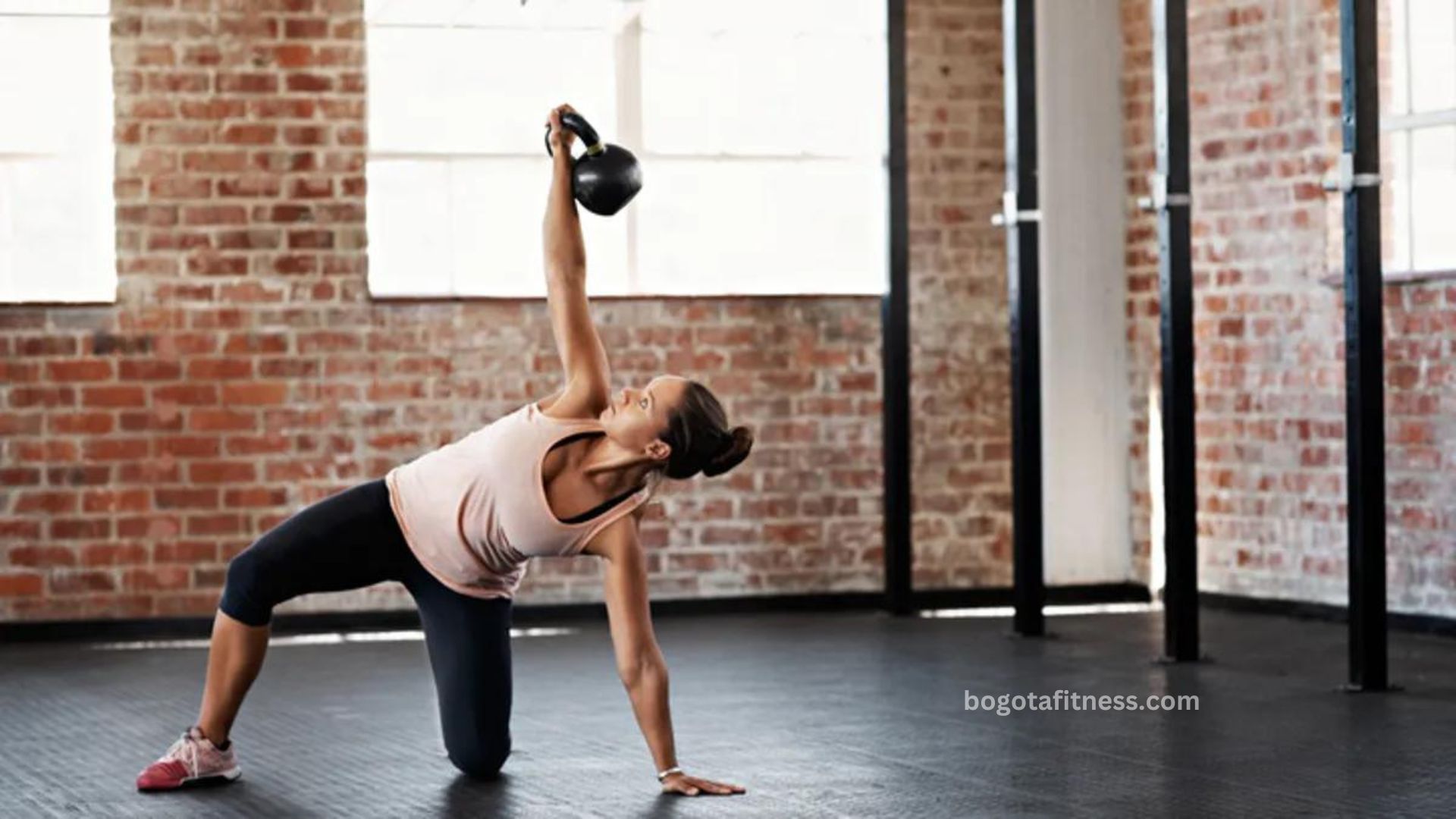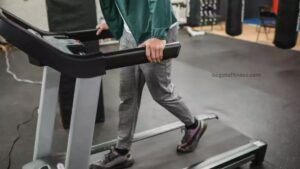Over time, kettlebell training has grown in popularity, and for good cause. This adaptable piece of gear provides a dynamic and efficient means of enhancing cardiovascular fitness, strengthening muscles, and optimizing body performance. However, beginning kettlebell exercise can be frightening and stressful for newcomers.
For this reason, we’ve put up this beginner’s guide to assist you in learning the fundamentals of kettlebell training. This guide will give you all the information and resources you need to safely and successfully include kettlebell training into your fitness program, regardless of your level of experience with lifting weights. So grab a kettlebell and get ready to increase the intensity of your workouts!
Introduction to Kettlebell Training
Exercises called kettlebell training use a handle-equipped cast-iron weight, or kettlebell, for resistance training. It is a very efficient type of exercise that mixes cardiovascular conditioning, flexibility, and strength training.
The practise of kettlebell exercise has its origins in Russian culture and has been around for generations. It was first utilized for strength and training by Russian strongmen and military troops. Its capacity to provide immediate and noticeable effects has led to its rise in popularity in the mainstream fitness community in recent years.
A handle-equipped cast-iron weight, or kettlebell, is used in exercises known as kettlebell training to provide resistance training. This kind of exercise, which combines strength training, flexibility, and cardiovascular conditioning, is incredibly effective.
Exercise with kettlebells is a long-standing tradition that originated in Russian culture. Russian strongmen and military personnel used it for strength and training at initially. Its ability to have results that are both immediate and obvious has contributed to its current surge in popularity among the mainstream fitness world.
Kettlebell exercise helps the heart in addition to the strength training does. Kettlebell exercises are an excellent approach to develop cardiovascular fitness and burn fat because of their explosive movements and high-intensity nature, which raise heart rate and burn calories.
Choosing the Right Kettlebell
Selecting the appropriate kettlebell is crucial to guaranteeing a safe and efficient workout. When choosing a kettlebell, there are a few things to take into account, including material, weight, and handle size.

Priority one should be given to selecting a kettlebell that fits your goals and degree of fitness. Your workout’s intensity will be determined by the kettlebell’s weight. It is advised that novices begin with a lower weight, usually between 8 and 12 kilograms (18 and 26 pounds). You can challenge yourself by progressively increasing your weight as you advance.
Another important thing to think about is the size of the handle. It shouldn’t be too wide to put undue pressure on your wrists, just wide enough for you to be able to hold onto it with both hands comfortably. Selecting a kettlebell with a handle that is marginally broader than your hand’s width when your fingers are spread wide apart is a decent general rule of thumb.
Last but not least, the kettlebell’s material matters for both comfort and durability. The most popular types of kettlebells are made of steel and cast iron because they are sturdy and offer a secure grip. If you exercise on hardwood floors, the rubber or vinyl covering that some kettlebells have might offer further protection and cut down on noise.
Proper Kettlebell Technique and Safety Tips
To guarantee efficiency and safety throughout your workouts, use kettlebells properly. Here are some crucial methods to remember:
- Start with the proper grip: Make sure you have a good grasp on the kettlebell by wrapping your fingers around the handle. Refrain from grasping excessively tightly since this might cause fatigue in the forearm and wrist. To avoid tension, maintain a straight wrist position.
- Maintain a strong core: To keep your body stable for the entire exercise, contract your core muscles. Your overall balance will improve and your lower back tension will be lessened as a result. Avoid stooping or curving your upper back, and maintain a back and lowered posture.
- Practice proper breathing: It’s crucial to breathe while doing kettlebell movements. Before starting the exercise, take a deep breath through your nose and release it quickly through pursed lips. This improves total power output and stabilizes your core.
- Use your hips: Exercises using kettlebells frequently target the hips rather than the arms. Initiate the movement from your hips and use your glutes, hamstrings, and core to generate power. This will spare your arms and shoulders from undue stress.
- Choose the right weight: Start with a kettlebell weight that is manageable for you and will enable you to perform the exercise with correct form the whole time. As you gain confidence in your technique and comfort level, gradually increase the weight.
Also Read: EXPERT TIPS FOR BEST RUNNING SHOES
When utilizing kettlebells, safety is the most important consideration. The following are some safety guidelines to remember:
- Warm up before starting: It is important to warm up your body before beginning any kettlebell exercise. By doing this, you lower your chance of injury by getting your muscles and joints ready for the upcoming actions.
- Keep a neutral spine: Steer clear of overly arching or rounding your back as this might cause strain and damage. To stabilize and safeguard your spine, maintain a neutral posture and contract your core muscles.
- Pay attention to your form: One of the primary reasons for injuries during kettlebell exercises is improper form. Prioritize form before speed or overweight wherever possible. Take the time to study and comprehend the correct technique for each activity.
- Start with slower movements: Practice making calm, deliberate motions when you initially start out. This lowers your chance of injury, helps you gain strength, and focuses on your form.
- Always exercise within your limits: It’s critical to pay attention to your body’s signals and refrain from overexerting yourself. Increase gradually
Essential Kettlebell Exercises for Beginners

There are a few key exercises you should concentrate on if you’re new to kettlebell training in order to establish a solid foundation. These workouts work a variety of muscle groups and are easily adaptable to your fitness level. These four workouts are great for burning fat, increasing strength, or improving mobility.
Kettlebell Swing
The kettlebell swing is the first fundamental exercise. This workout works the entire posterior chain, which includes the lower back, hamstrings, and glutes. Step one is to stand with your feet shoulder-width apart in order to execute the swing. Using your hips to propel the movement, raise the kettlebell to chest height while holding it with both hands between your knees. Throughout the exercise, maintain a firm core and a straight back.
Goblet Squat
The goblet squat is a crucial exercise for beginners. This exercise works your glutes, hamstrings, and quadriceps while strengthening your upper body and core. The goblet squat is performed by standing with your feet slightly wider than shoulder-width apart and holding the kettlebell with both hands at chest level. Maintaining your knees in line with your toes, lower yourself into a squat and then push yourself back up to the starting position.
Kettlebell Row
Kettlebell rowing is the third exercise that is absolutely necessary for novices. This workout works your biceps and upper back, and it also strengthens your core for stability. Step one is to stand with your feet hip-width apart before beginning the row. Hinge at the hips, hold the kettlebell with your right hand, and extend your left arm in front of you. Squeeze your shoulder blades together as you raise the kettlebell to your chest and then return it to its starting position. Continue on the opposite side.
Kettlebell Deadlift
Lastly, a fundamental exercise that works your hamstrings, lower back, and glutes is the kettlebell deadlift. Start by standing with your feet shoulder-width apart in order to complete the deadlift. With both hands, hold the kettlebell in front of you. Hinge at the hips, then lower the kettlebell toward the ground while maintaining a flat back. Firm your hamstrings and glutes to raise the kettlebell back up to the beginning position.
Developing a Beginner’s Kettlebell Training Program
A beginner’s kettlebell training regimen should take a few important considerations into account. Above all, it’s crucial to begin slowly and progressively increase the duration and intensity of your workouts. This will lower the chance of damage by enabling people to gradually increase their strength and endurance.
It’s also critical to start off with an emphasis on correct form and technique. Because kettlebell exercises can be somewhat complicated, it’s important to take the time to acquire the proper form in order to maximize workout efficacy and minimize the danger of strain or injury.
It’s essential to begin with the fundamentals when it comes to exercises. Exercises that engage many muscle groups and are effective fundamental exercises for beginners are the kettlebell swing, goblet squat, and Turkish get-up.
Exercises for both strength and conditioning should also be included in the program. This enables people to increase their cardiovascular fitness and gain lean muscular mass. This balance can be attained by alternating between strength-training routines and more dynamic motions like single-arm swings or kettlebell snatches.




